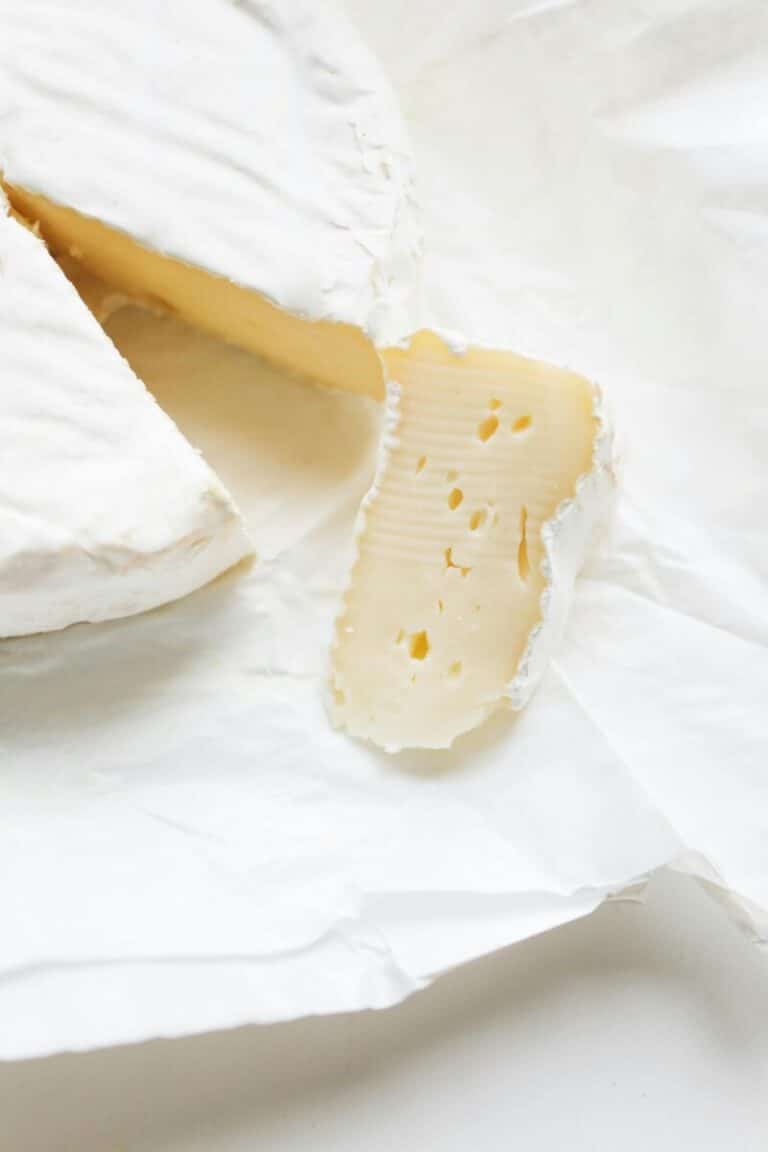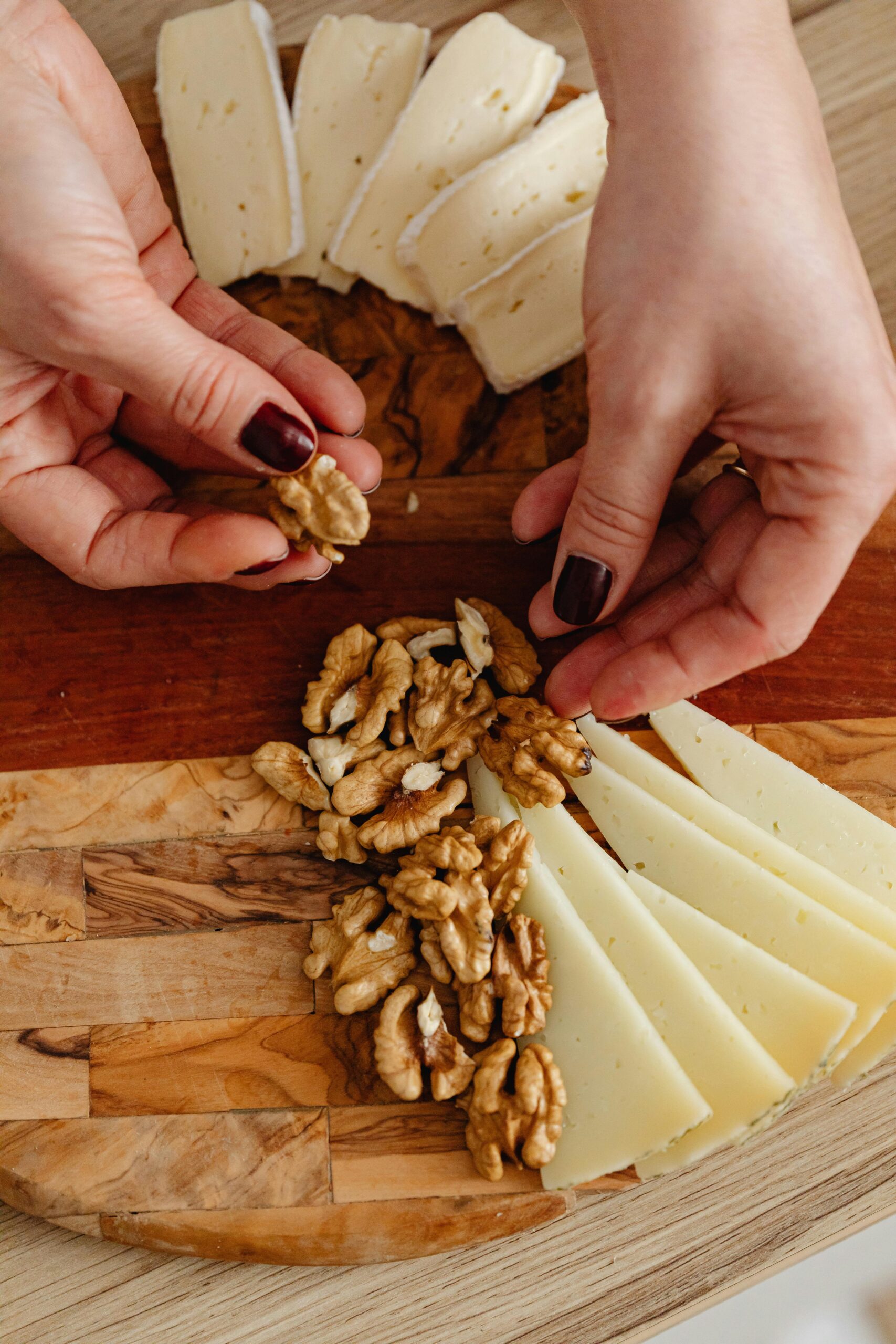
Camembert, a jewel in the crown of French cheese, is renowned for its creamy texture, rich history, and the meticulous craft involved in its production. This soft cheese is deeply rooted in French culture. It offers a delightful taste experience that has evolved since the days of Marie Harel, credited with its creation during the French Revolution. In this comprehensive guide, we delve into what Camembert cheese is, how it’s made, and the best ways to savor its unique flavor.
What is Camembert Cheese?
Camembert is a soft, creamy, raw cow’s milk cheese that hails from the Normandy region in Northern France. It is characterized by its edible, white bloomy rind and a soft, slightly runny interior that exudes a rich, buttery flavor. The cheese is traditionally sold in small, round wooden boxes. This not only aids in aging but also in maintaining its shape and integrity during transportation.
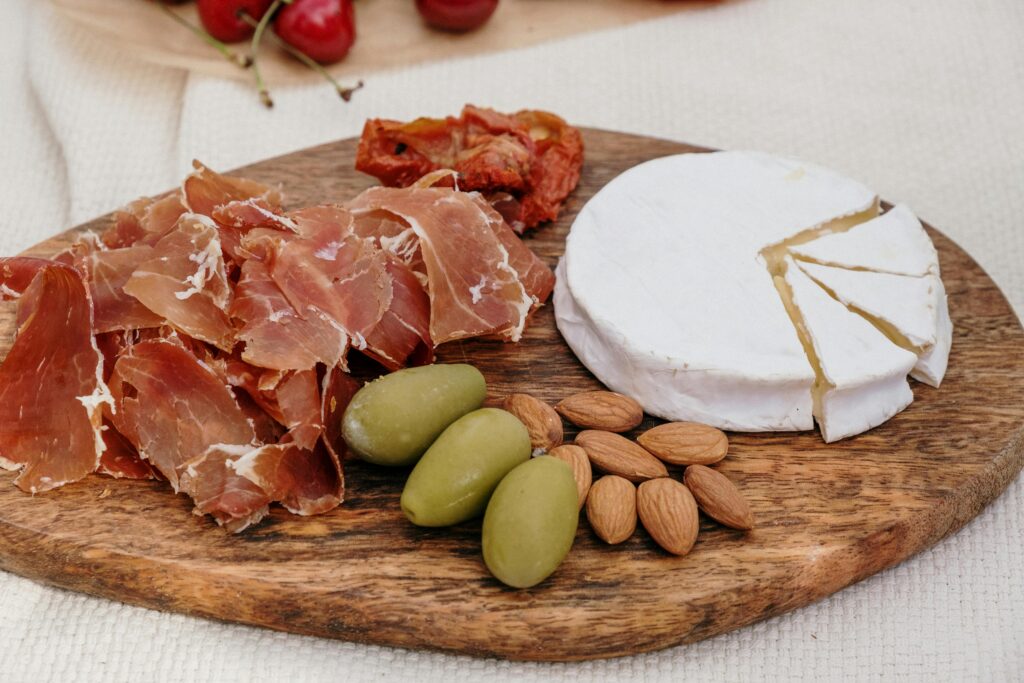
History Of Camembert Cheese
The story of Camembert dates back to the late 18th century, with Marie Harel playing a major role in its invention. Legend has it that Harel, under the guidance of a priest from Brie, refined the local cheese-making techniques. This eventually led to the birth of Camembert. Since then, Camembert has become a national symbol, celebrated alongside other outstanding cheeses like Brie de Meaux.
How is Camembert Made?
The making of traditional Camembert involves a delicate and labor-intensive process that has remained largely unchanged since the end of the 19th century. Here’s a step-by-step breakdown of the entire process:
1. Collecting and Preparing the Milk
Camembert is made from raw cow’s milk, specifically from Normande cows. These cows are known for their high-quality milk with the perfect fat content for cheese-making. The unpasteurized milk is gently warmed and mixed with necessary cultures, including penicillium candidum, penicillium camemberti, and sometimes geotrichum candidum. These cultures play important roles in developing the cheese’s flavor and texture.
2. Adding Rennet and Starter Culture
To the warm milk, a starter culture and rennet are added to facilitate coagulation. The mixture is left to rest until a firm curd forms, a stage known as the “clean break.” This process is crucial for developing the camembert curd’s texture.
3. Cutting the Curd and Molding
Once the milk has set, the curd is cut into small pieces to help drain the whey. The curd is then carefully ladled into molds—traditionally, this is done with clean hands to ensure gentleness. The molds allow the whey to drain further and the camembert shape to form.
4. Salting and Aging
After a day or two, the young cheeses are removed from the molds, salted with dry salt or brine, and then transferred to a cheese cave. Here, the aging process begins, which can last several weeks. During this time, the cheese develops its characteristic white mould rind thanks to the penicillium camemberti. The aging process in the controlled environment of a cheese cave or cheese fridge is essential for achieving the desired creamy texture and flavor of Camembert.
5. Packaging
Once the aging process is complete, the wheels of Camembert are wrapped in breathable materials like cheese paper or placed in wooden boxes. This packaging helps maintain the moisture level and allows the cheese to continue maturing even after it leaves the cave.
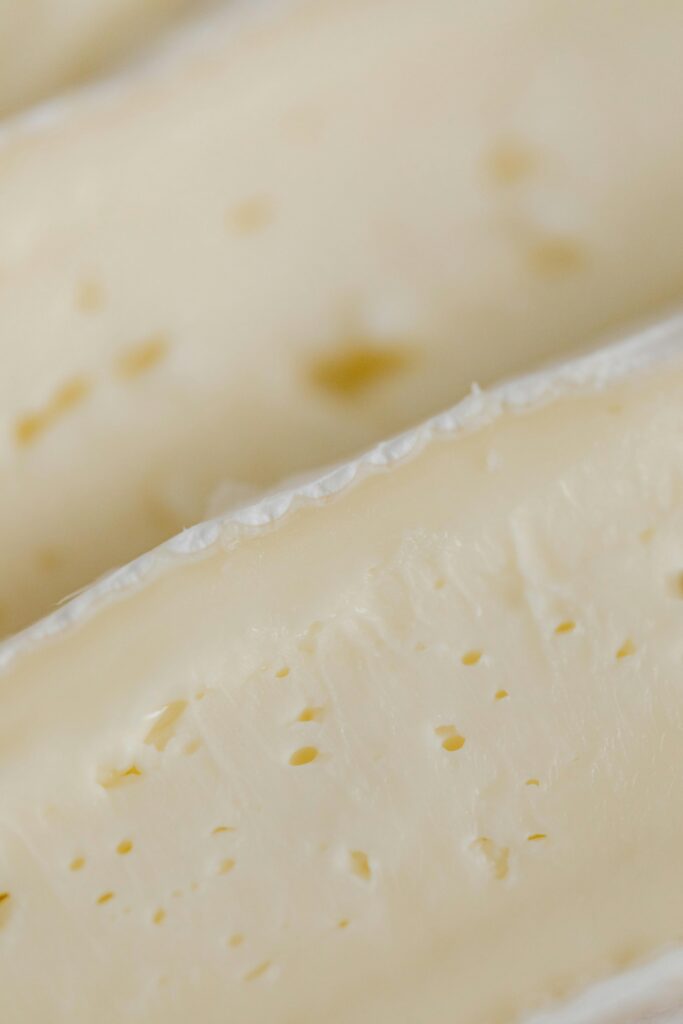
Suggested: Can You Freeze Cheese?
Camembert Nutrition And Calories
Camembert cheese is not only celebrated for its exquisite taste but also for its nutritional content. Like many cheeses, Camembert offers a range of nutrients, including protein, fat, and essential vitamins and minerals. Here’s a breakdown of the nutrition and calories found in Camembert:
Nutritional Content (Per 100 grams):
- Calories: Approximately 300 kcal
- Protein: About 20 grams, making it a good source of high-quality protein.
- Fat: Around 24 grams, with a mix of saturated and unsaturated fats. The fat content contributes to the cheese’s creamy texture and flavor.
- Carbohydrates: Camembert contains less than 1 gram of carbohydrates, making it a low-carb food option.
- Calcium: Offers about 400-500 mg, which is significant for bone health.
- Vitamin B12: A good source of Vitamin B12, essential for brain health and the nervous system.
- Other Nutrients: It also provides phosphorus, zinc, and vitamin A, among others, contributing to overall health and well-being.
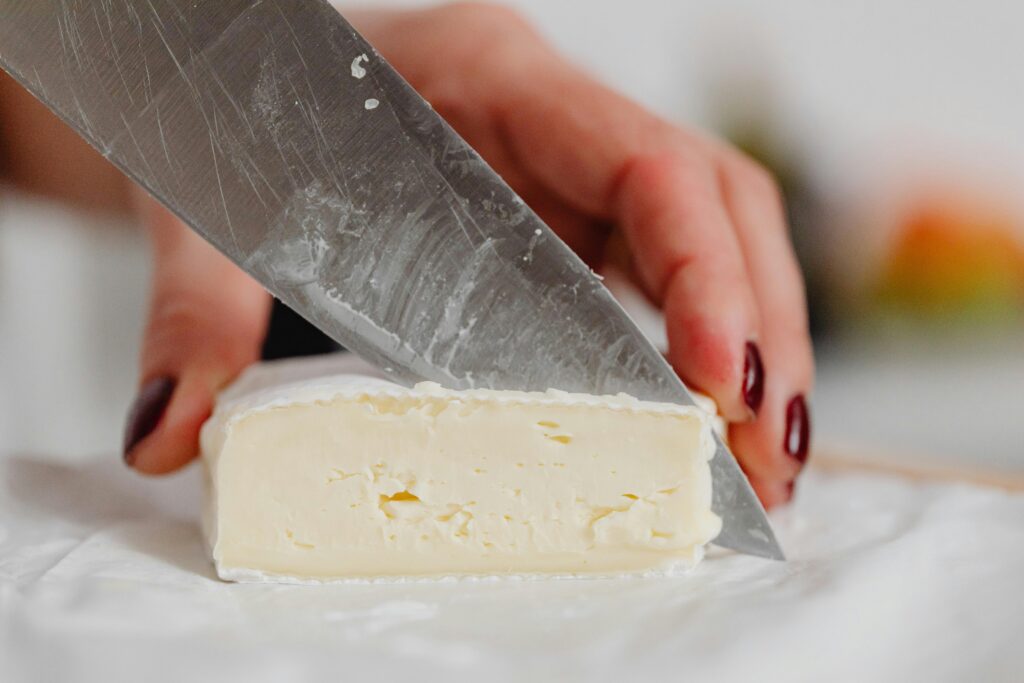
Health Considerations:
While Camembert is nutrient-dense, it’s also high in saturated fats and calories, which means it should be consumed in moderation, especially if you’re monitoring your calorie intake or managing cholesterol levels. The high-quality protein and calcium in Camembert can be beneficial to your diet, supporting muscle function and bone health.
Serving Size:
A typical serving size of Camembert is about 30 grams, which contains approximately 90 calories, 6 grams of protein, and 7 grams of fat. Enjoying Camembert in moderation allows you to savor its rich flavor while managing your overall dietary intake.
Final Thoughts on the Nutrition of Camembert
In summary, Camembert is a flavorful and nutritious cheese that can be a part of a balanced diet when consumed in moderation. Its rich content of protein, calcium, and vitamins makes it a worthwhile addition to your cheese selection, offering both health benefits and culinary delight.
Camembert cheese, with its creamy texture and rich flavor, is a versatile ingredient that can enhance a variety of dishes. Here are 10 delicious Camembert cheese recipes that showcase its versatility:
Each of these recipes highlights the unique flavor of Camembert, making it the star of the dish. Whether you’re looking for a cozy appetizer, a comforting main, or a quick and easy snack, there’s a Camembert recipe here for every occasion.
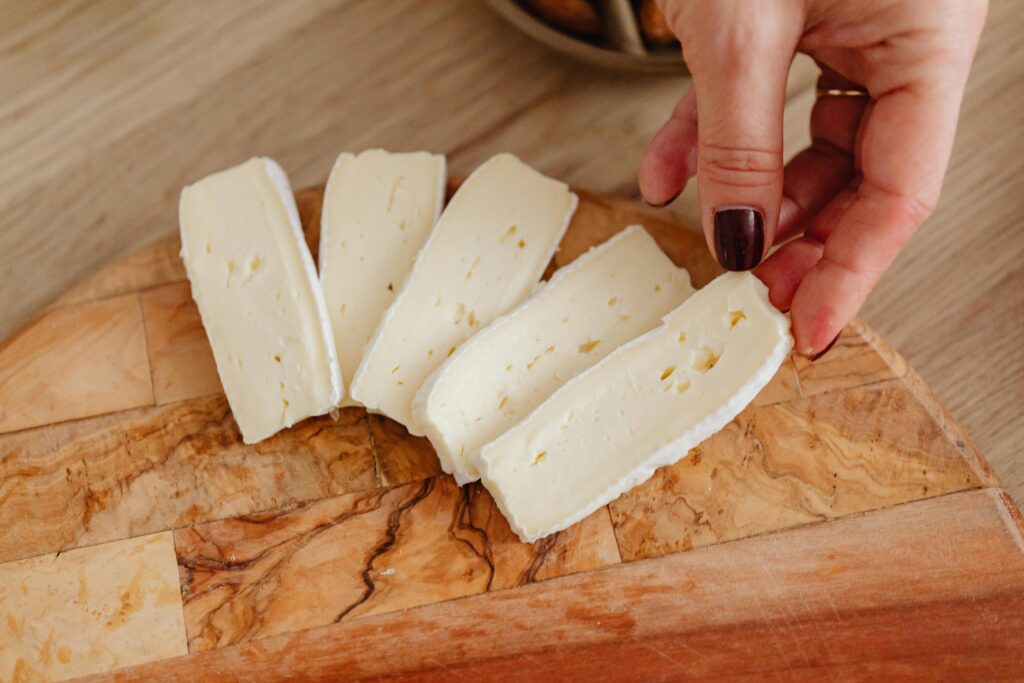
How to Eat Camembert
Camembert is best enjoyed at room temperature, which allows its flavors and creamy texture to be fully appreciated. Here are some tips for serving and enjoying Camembert:
- Preparation: Remove the cheese from the fridge at least an hour before serving to bring it to room temperature. If wrapped in plastic, consider transferring it to cheese paper or a container that allows it to breathe.
- Serving Suggestions: Camembert pairs beautifully with a variety of accompaniments. Try it with baguette slices, on a cheese board with fruits and nuts, or baked in puff pastry for a decadent treat. Its rich flavor complements both red wine, like a smooth Chenin Blanc, and white wines.
- Health Considerations: Due to its raw milk content, pregnant women and those with compromised immune systems are advised to avoid unpasteurized cheeses like traditional Camembert.
Suggested: How to Eat Brie Cheese
How To Store Camembert
To store Camembert properly and maintain its quality, follow these steps:
- Keep it Cool: Store Camembert in the refrigerator at a temperature around 4°C (39°F). The cheese drawer or a cooler part of the fridge is ideal, as it provides a stable environment.
- Proper Packaging: If your Camembert came in a wooden box, you can keep it in its original packaging. Otherwise, wrap the cheese in waxed or parchment paper, then loosely in plastic wrap or place it in an airtight container. This approach allows the cheese to breathe while retaining moisture, preventing it from drying out or absorbing other flavors from the fridge.
- Avoid Contamination: Keep the cheese away from strongly-scented foods to prevent flavor absorption.
- Room Temperature Before Serving: For the best flavor and texture, remove the Camembert from the fridge and let it sit at room temperature for about an hour before serving.
By following these storage tips, you can enjoy your Camembert at its best quality for about one to two weeks after purchasing.
Camembert Cheese Recipes
- Baked Camembert with Apples and Caramelized Onions
- Place a wheel of Camembert in a baking dish. Score the top, drizzle with the onions and diced apples. Bake at 180°C (350°F) until soft and gooey. Serve with crusty bread for dipping. Find the full recipe here.
- Camembert and Apple Tart
- Lay sliced apples on a puff pastry sheet, top with thin Camembert wedges, and bake until golden. Finish with a drizzle of honey and a sprinkle of thyme for a sweet and savory treat. Suggested: Baked Camembert Apple Tart.
- Camembert, Fig, and Caramelized Onion Pizza
- Top your pizza dough with caramelized onions, fig slices, and chunks of Camembert. Bake until the cheese is melted and bubbly, and the crust is crispy.
- Camembert Cheese Fondue
- Melt Camembert with garlic, white wine, and a dash of nutmeg for a rich fondue. Serve with chunks of bread, vegetables, and apples for dipping.
- Garlic and Herb Stuffed Camembert
- Cut slits in a Camembert wheel and insert slices of garlic and fresh herbs. Wrap in foil and bake until the cheese is melted. Serve with baguette slices.
- Camembert and Mushroom Stuffed Chicken Breast
- Stuff chicken breasts with slices of Camembert and sautéed mushrooms. Bake until the chicken is cooked through. Serve with a creamy mustard sauce.
- Roasted Vegetable and Camembert Quiche
- Fill a pre-baked pie crust with roasted vegetables (like bell peppers, zucchini, and onions) and chunks of Camembert. Pour over a mixture of eggs and cream, then bake until set.
- Camembert Mashed Potatoes
- Stir chunks of Camembert into hot mashed potatoes until the cheese is melted. Season with salt, pepper, and fresh chives for a decadent side dish.
- Camembert and Pear Grilled Cheese
- Sandwich slices of Camembert and pear between two pieces of sourdough bread. Grill until the bread is toasted and the cheese is melted. Suggested: Pear Camembert Grilled Cheese.
- Cranberry and Camembert Puffs
- Place small chunks of Camembert and a dollop of cranberry sauce on puff pastry squares. Fold and seal the edges, then bake until puffed and golden.
Suggested: What Does Brie Taste Like
Final Thoughts
Camembert’s storied past, from its creation by Marie Harel in the village of Camembert during the turbulent times of the French Revolution to its status as a protected designation of origin (PDO) cheese, underscores its cultural and culinary significance. Whether you’re a cheese aficionado or a curious foodie, understanding and appreciating the art of making Camembert enriches the experience of enjoying this exquisite French cheese.

Christopher is a food and lifestyle expert, recipe developer and the content creator behind May Eighty Five. With years of experience in the kitchen, he also shares tips, tricks and how to’s that he has learnt over the years. Every week, he shares quick, simple and mostly healthy recipes along with some home and entertaining tips. You will find flavorful cocktails, delicious appetizers, tasty mains and some indulgent desserts. As a home decor enthusiast, he also likes to share simple DIY projects and simple tips for a beautiful home.






